Since the days when Peter the Apostle became the Bishop of Rome and the first Pope of the Roman Catholic Church, those who have remained faithful have kept the sacrament of holy communion. The frequency and practice of communion varies in some of the protestant faiths, i.e., Roman Catholics celebrate communion at every mass, others serve communion only on first Sundays and Easter. In very specific ways the devout use communion as a reminder of the Last Supper, at which bread and wine were consecrated and shared among the disciples, with a blessing from Jesus, who said, “Do this in remembrance of me.”

The International Eucharistic Congress is a gathering of Catholics, and others, from around the world to celebrate and develop deeper understandings of the Eucharist or the Holy Communion. It is a time for peace and provides an opportunity for participants to learn the theological and spiritual significance of the Eucharist. Through talks and workshops led by bishops, theologians, and other experts, attendees can learn more about the history, symbolism, and meaning of the Eucharist in the life of the church.
One of the highlights of the International Eucharistic Congress is the procession, where faithful church leaders and officials carry the Blessed Sacrament in a solemn procession through the streets of the host city. The procession is usually a silent affair; there is no music, only the sound of footsteps. At two events (1922 in Rome and 1924 in Amsterdam) more than 100 thousand people joined the procession. One account of the 1922 procession recalled the eeriness of so many people who silently walked through the city.
The congress is also an opportunity for Catholics from different countries to meet and form friendships. There is a story about a young man from Vermont who attended the congress at Chicago in 1926. He had plans to enter the priesthood and thought that participating in a Eucharistic Congress would help in making his decision. The decision was made easy when he met a young woman from Belgium who six weeks after the event became his wife. Apparently, this story is often told in seminary lectures with the tagline, “the meeting of these two souls gives a whole new meaning to come together in fellowship and unity.”
Participants can meet and connect with fellow believers from around the world, sharing their faith and experiences, and building relationships that transcend national and cultural boundaries.
The first international congress was held in Lille, France in 1881. After the congress that is schedule for this year (2024) in Quito, Ecuador, 53 such gatherings will have occurred on six continents.
In addition to its spiritual and theological significance, the International Eucharistic Congress also has a profound impact on the host city and country. The event often attracts thousands of visitors, bringing a boost to the local economy, especially those providing travel services. It also provides an opportunity for the local Catholic community to enhance their presence at home and around the world.
***
It should surprise no one that many of the IEC events have been advertised with postcards. Postcard History is pleased to present a select few, in no particular order, from a collection that was started only a few years ago by a reader living in Louisiana. Postcards, in instances like religious events, are considered worthy souvenirs.
Left: from the 21st Congress, held in Montreal on September 7 – 11, 1910 – the first congress to be held in North America. Right: from the 28th Congress, held June 20-24, 1926 – the first congress held in the United States. An estimated crowd of 500,000 attended the open-air events at Soldier Field.
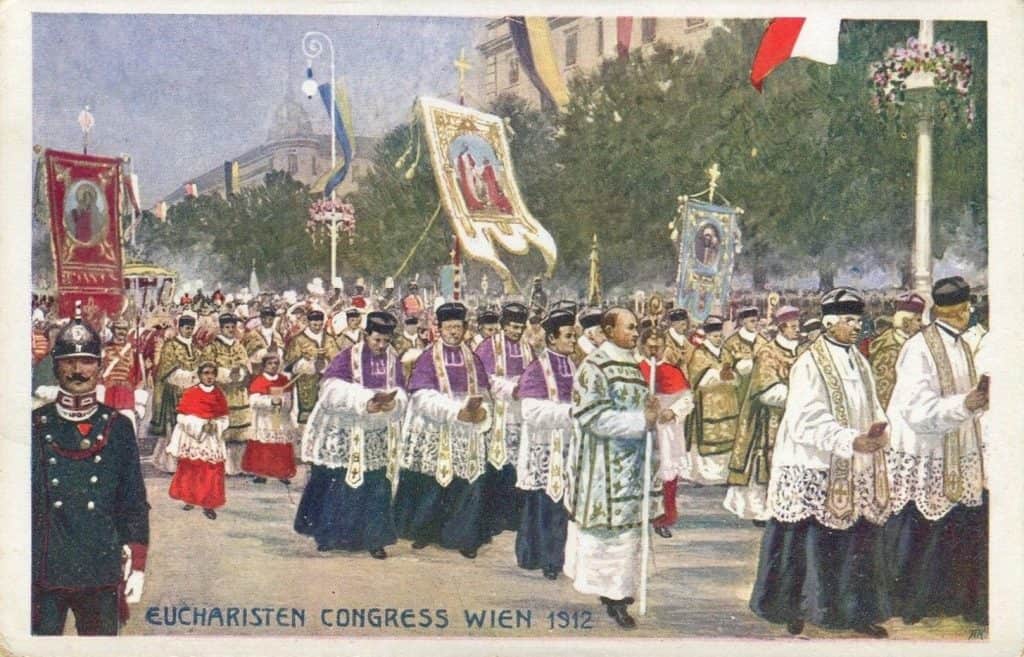
Left: from the 31st Congress, held in Dublin, Ireland on June 22 – 26, 1932. This event celebrated the 1500th anniversary of St. Patrick’s arrival in Ireland. Right: from a planned 1951 event that never happened – except for the Catholics of France. Pope Pius addressed the event by radio and told his listeners about the “definite threats of total war that hover like a black cloud over humanity.”
The Congress at Nimes would have been the first after the end of World War Two. The planning was plagued with unforeseen political and economic problems that led to the cancelation of the congress in favor of the Barcelona event that took place from May 27 to June 1, 1952. The attendance at Barcelona was severely hampered by Cold War politics, that limited possible attendees from Communistic eastern European countries. However, the presence of New York’s Cardinal Spellman and Chicago’s Cardinal Stritch, who said open-air masses brought thousands to the altar.

The 34th Congress, held in Budapest, Hungry, from May 25 – 29, 1938. It may well have been the best attended Congress up to that time. The estimates of 150 thousand Catholics from around the globe attended that included 15 cardinals and 330 bishops, as well as Cardinal Giovanni Pacelli, who the following year became Pope Pius XII. [Sadly, the artwork was unsigned.]
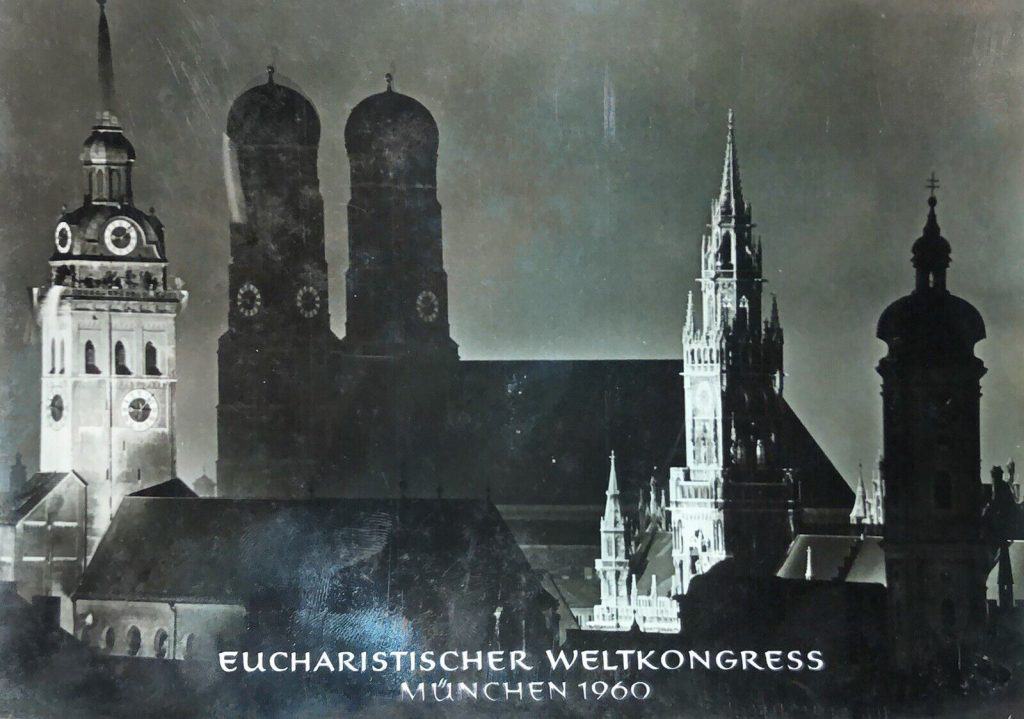
The 37th Congress was held in Munich, Germany, from July 31 – August 7, 1960. It was time of healing; a major event included the laying of a foundation stone for a “church of atonement” near Dachau Concentration Camp.
***
Above: other cards from the 1932 congress in Dublin showing the River Liffey Bridge in Dublin and from the Montreal event of 1910 showing famous Catholic leaders of the era.
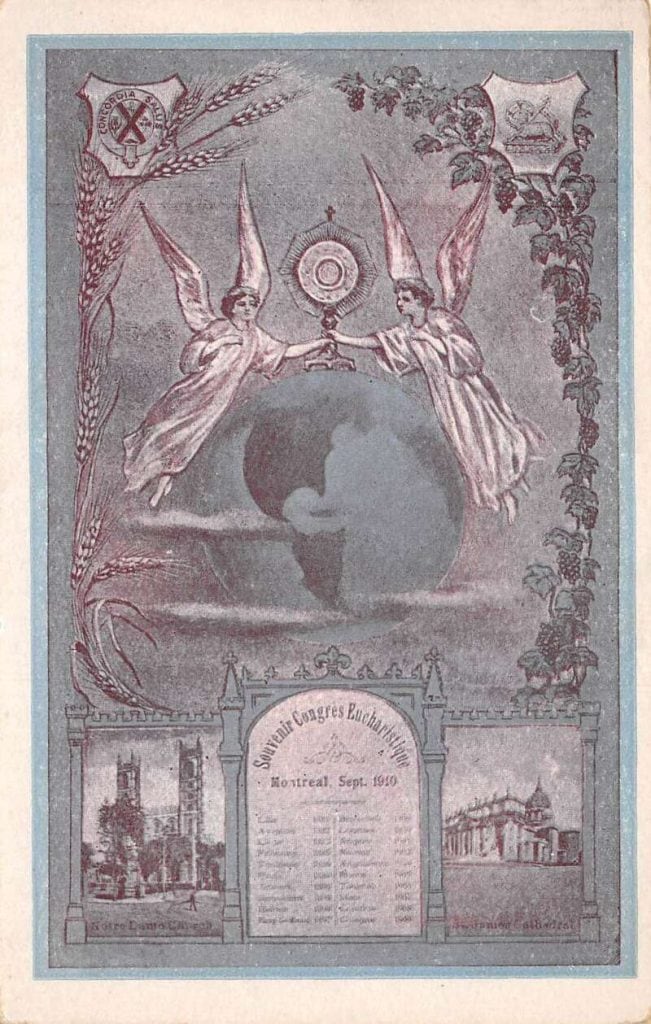
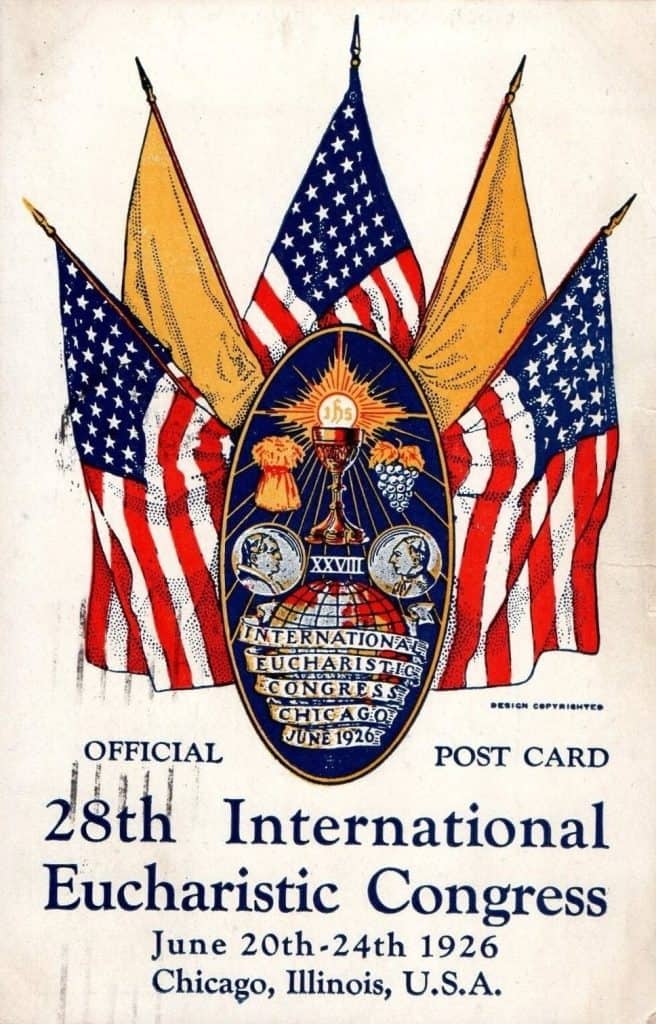
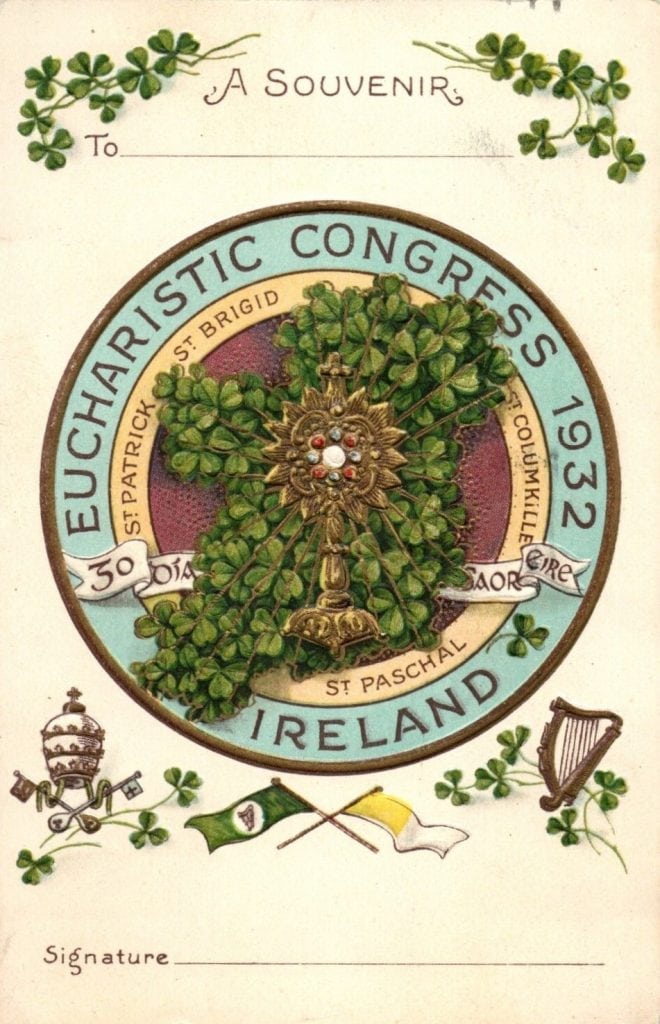
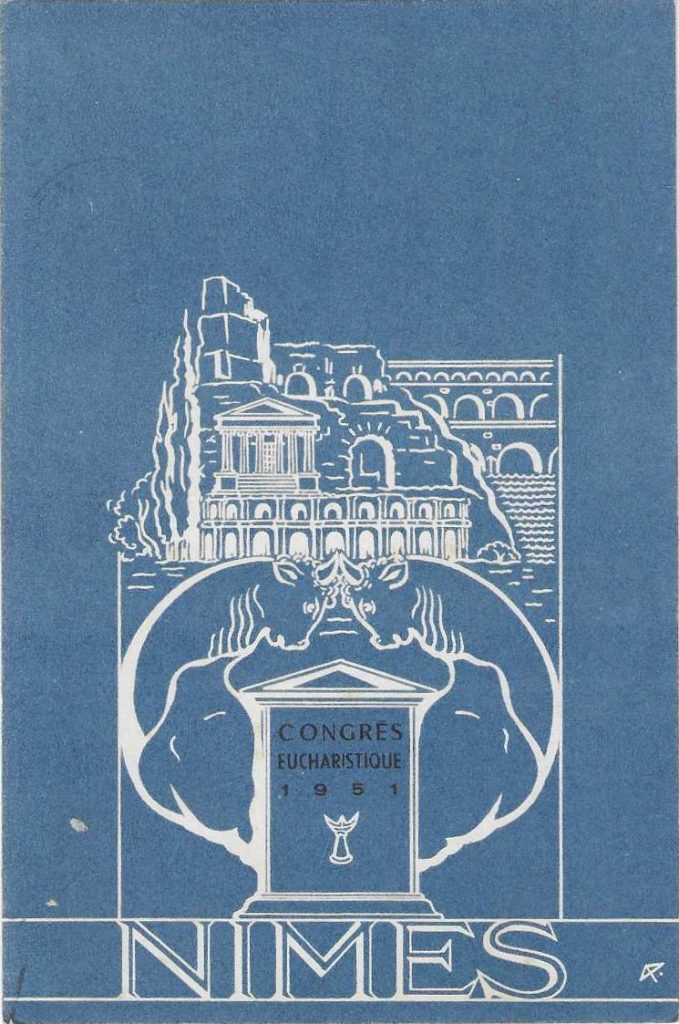
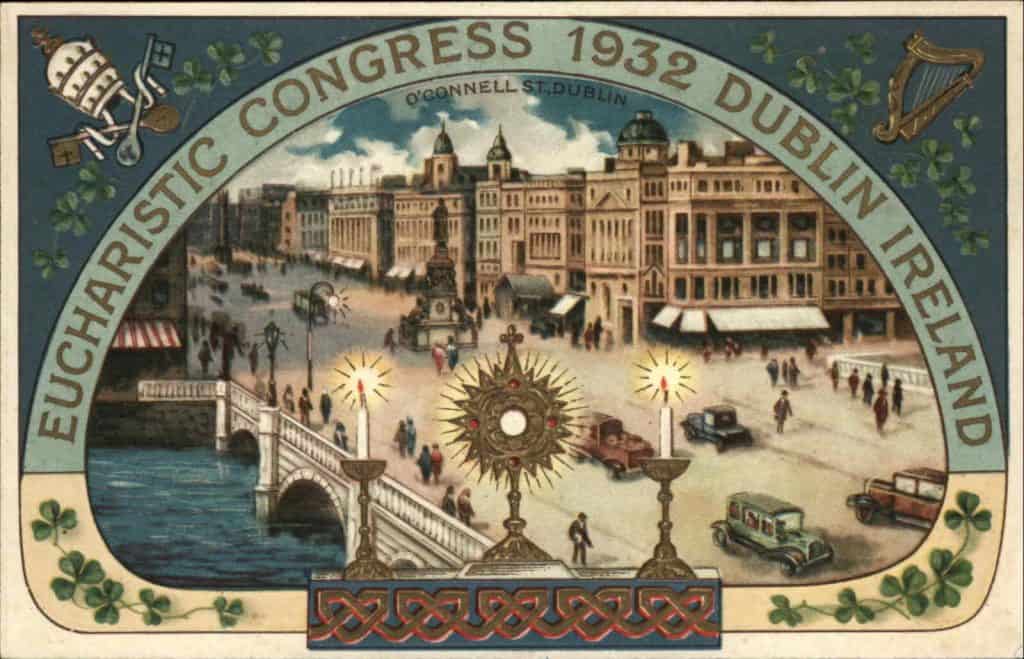

The last World Eucharistic Congress hosted by the United States took place in Philadelphia in 1976.
Good article. Thank you for doing it.
Good topic for an article! I have several Eucharistic Congress cards as well, notably from the 1910 Montreal congress, which occurred around the peak of the postcard craze.